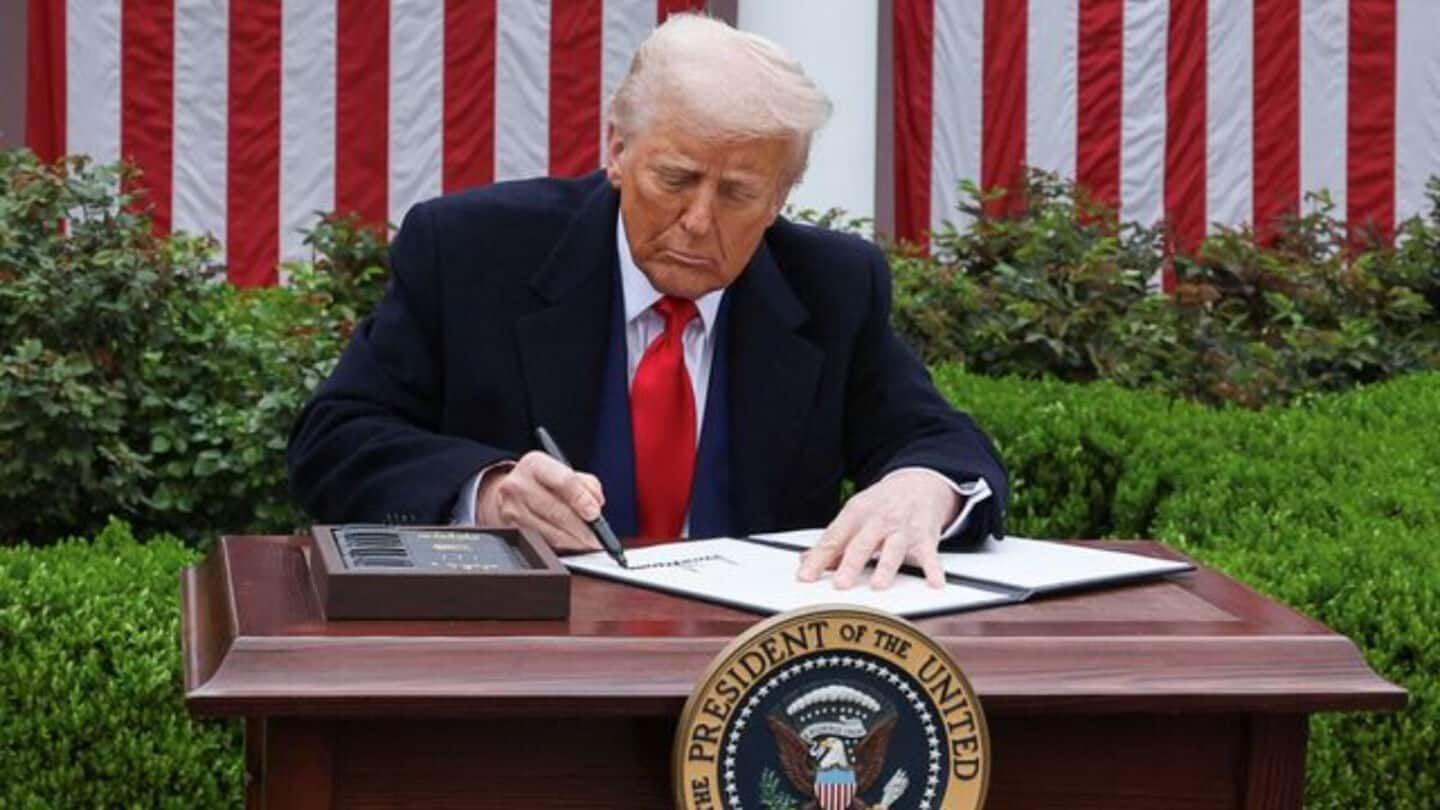
How Trump calculated reciprocal tariffs
What's the story
US President Donald Trump has imposed a new set of reciprocal tariffs, between 10% and nearly 50%, on countries he accuses of taking advantage of America for years.
The United States Trade Representative (USTR) has explained that these tariffs are calculated using a unique method that emphasizes trade balances mainly instead of matching tariff rates and trade barriers.
This is to tackle America's trade deficits with other nations.
Calculation method
A closer look at the new tariff formula
The USTR has given a detailed breakdown of the new tariff calculation method.
As per Bloomberg's analysis, the formula divides a country's trade surplus (total exports−total imports) with the US by its total exports. The US Census Bureau data for 2024 is used in this.
The final step is to halve the result to get what is called the "discounted" tariff rate.
Country-specific application
How does this method apply to different countries?
For example, China's trade surplus with the US last year was $295 billion on total exports of $438 billion, giving a ratio of 68%.
Using the new formula, this would give a tariff rate of 34%, which is what the US has imposed on China.
This method of calculation has also been applied to other nations like Japan and South Korea.
However, some countries with trade surplus/balanced trade with the US are charged a flat 10% tariff rate.
Economic impact
Trump's tariff formula has raised eyebrows among economists
The announcement of these tariffs and the unique calculation method behind them has confused global markets.
The rates announced by Trump slightly differed from those listed in the annexure accompanying his executive order.
Economists are questioning how these rates were derived, with some suggesting they may have been calculated using a simple formula rather than a comprehensive analysis of the complex nature of tariffs, trade and non-trade barriers, as well as currency movements.